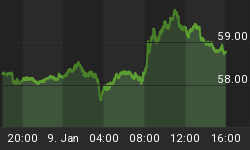
Markets that remain rangebound can be quite frustrating when the time period of the range gets long in the tooth and erratic in its structure. Everyone waits for it to break out or down - but the path of most resistance for traders becomes the range itself. What complicates this dynamic even further is when the range expands or contracts over time. I find it helpful in these conditions to maintain an agnostic and opportunistic approach and hold my trading biases and postures looser than I typically would. It requires greater patience with your performance, than say a market trending with great upside momentum or a market correcting with great velocity. Both of those conditions have degrees of force that by comparison can be appraised and extrapolated with greater precision. For all of these reasons (and many more), trading smaller is warranted - especially when you find yourself in the middle of the range.
In some of my first notes in early spring I felt that this year's market would be personified as rangebound, because of the great uncertainty in emerging from the Fed's extraordinary monetary policies. From my notes on April 1st:
"Further diving down the timeframes to the daily charts, I would expect the market to loosely follow the script from 2004 - in that it basically traded sideways for the remainder of the year as traders wrestled with the notion of a less accommodative Fed and what that meant for stocks, commodities and bonds."
This forecast drew on the market's recent historic parallels in emerging from a recession and reacting to the Fed's initial response of decreasing monetary stimulus. The market in late 1983 and 1984 consolidated within a range for approximately 18 months before breaking out to new highs after the Fed raised interest rates. The market in 1994 was rangebound for approximately one year after the Fed raised rates. And in 2004 the market consolidated for the better part of a year as the fed began removing the extraordinary monetary policies now deemed laissez-faire. It is interesting to note that the last leg down to the final low of that range began after the Fed started raising rates in late June of that year. On a relative basis - we could look at the end of QE2 in June as an inflection point in current monetary policy.
The common denominator in all of these periods is that investors were very concerned that the economy could slip back into recession after the Fed took the training wheels off - or in today's case - the afterburners. Certainly the current market climate has risks inherent to the unique conditions both here and abroad. The threat of an exogenous shock to a fragile and healing economy is real and provides ample concern and audible potential in drawing correlations from the three most recent recessions. A disorderly euro collapse, a severe downturn in China or a significant leg lower in the housing market would likely provide a catalyst for a significant correction and a second recession.
With that said, I am still in the camp that believes our economy is in transition to firmer footings as reflected in a market that has to date corrected more with time rather than price. The best I could guesstimate from this perch is we will very likely see a lower low than the one carved in June. Many of the typical capitulation personalities were absent from that low. I believe we will find them sooner than later.
So don't get too comfortable with this home on the range - it shouldn't last much longer.
I just joined Twitter. All my trades and occasional market musings are disclosed in real-time here.
















